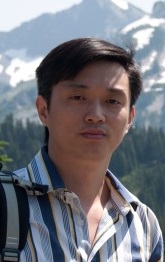Boundary-sensitive Hodge Decompositions
Konrad Polthier (Freie Universität Berlin, Germany)
Abstract
We provide a theoretical framework for discrete Hodge-type decomposition theorems of piecewise constant vector fields on simplicial surfaces with boundary that is structurally consistent with decomposition results for differential forms on smooth manifolds with boundary. In particular, we obtain a discrete Hodge-Morrey-Friedrichs decomposition with subspaces of discrete harmonic Neumann fields $\calH_{h,N}$ and Dirichlet fields $\calH_{h,D}$, which are representatives of absolute and relative cohomology and therefore directly linked to the underlying topology of the surface. In addition, we discretize a recent result that provides a further refinement of the spaces $\calH_{h,N}$ and $\calH_{h,D}$, and answer the question in which case one can hope for a complete orthogonal decomposition involving both spaces at the same time.
Exciting open questions are related to the so-called Poincaré-angle which appears as a feature of the decomposition on surfaces with positive genus. As applications, we present a simple strategy based on iterated $L^2$-projections to compute refined Hodge-type decompositions of vector fields on surfaces, which gives a more detailed insight than previous decompositions. As a proof of concept, we explicitly compute harmonic basis fields for the various significant subspaces and provide exemplary decompositions for two synthetic vector fields. All techniques are essential for vector field analysis, surface parametrization, remeshing and others. We will show several applications.
Brief Biography
Konrad Polthier is full professor of mathematics at Freie Universität Berlin since 2005. He received his PhD from University of Bonn in 1994, and headed research groups a Technische Universität Berlin and Zuse Institute Berlin before joining FU Berlin. His research focuses on discrete differential geometry, applied geometry, geometry processing and mathematical visualization. Results from him have been applied in industry such as computer graphics, computer aided design and architecture. Dr. Polthier has written and co-edited books on mathematical visualization and produced mathematical video films. His video MESH – A Journey through Discrete Geometry (www.mesh-film.de, joint with Beau Janzen, Los Angeles) has received international awards including "Best Animation" at the New York International Independent Film Festival. Polthier served as conference chair on international conferences including ACM/Eurographics Symposium on Geometry Processing and SIAM Geometric Design. His professional positions include chair of the Berlin Mathematical School, board member of the Matheon research center and chair of the Berlin Mathematical Society. Since May 2014 he serves as co-editor in chief of Computer Aided Geometric Design. For more details see: http://www.polthier.info |
 |
Volumetric T-Spline Parameterization for Isogeometric Analysis with Engineering Applications
Yongjie Jessica Zhang (Carnegie Mellon University, USA)
Abstract
As a new advancement of traditional finite element method, isogeometric analysis (IGA) was proposed to integrate design and analysis. In this talk, I will present our latest research on volumetric T-spline parameterization for IGA applications. For arbitrary-topology objects, we first build a polycube whose topology is equivalent to the input geometry and it serves as the parametric domain for the following trivariate T-spline construction. Boolean operations, geometry skeleton and centroidal Voronoi tessellation based surface segmentation are used to preserve surface features. A parametric mapping is then used to build a one-to-one correspondence between the input geometry and the polycube boundary. After that, we choose the deformed octree subdivision of the polycube as the initial T-mesh, and make it valid through pillowing, quality improvement, and applying templates or truncated subdivision schemes to handle extraordinary nodes. Weighted and truncated T-spline basis functions are derived to enable analysis-suitability, including partition of unity and linear independence. Isogeometric analysis is performed using the developed basis functions with the study of convergence rate. The developed pipelines have been incorporated into commercial software such as Rhino and Abaqus.
Brief Biography
|
Yongjie Jessica Zhang is a Professor in Mechanical Engineering at Carnegie Mellon University with a courtesy appointment in Biomedical Engineering. She received her B.Eng. in Automotive Engineering, and M.Eng. in Engineering Mechanics from Tsinghua University, China; and M.Eng. in Aerospace Engineering and Engineering Mechanics and Ph.D. in Computational Engineering and Sciences from Institute for Computational Engineering and Sciences (ICES), The University of Texas at Austin. After staying two years at ICES as a postdoctoral fellow, she joined CMU in 2007 as an assistant professor, and then was promoted to an associate professor in 2012 and a full professor in 2016. Her research interests include computational geometry, mesh generation, computer graphics, visualization, finite element method, isogeometric analysis and their application in computational biomedicine, material sciences and engineering. She has co-authored over 140 publications in peer-reviewed journals and conference proceedings, and received the Autodesk Best Paper Award 1st Place in SIAM Conference on Solid and Physical Modeling 2015, the Best Paper Award in CompIMAGE’16 conference and one of the 5 Most Highly Cited Papers Published in Computer-Aided Design during 2014-2016. She recently published a book entitled “Geometric Modeling and Mesh Generation from Scanned Images” with CRC Press, Taylor & Francis Group. She is the recipient of Presidential Early Career Award for Scientists and Engineers, NSF CAREER Award, Office of Naval Research Young Investigator Award, USACM Gallagher Young Investigator Award, Clarence H. Adamson Career Faculty Fellow in Mechanical Engineering, George Tallman Ladd Research Award, and Donald L. & Rhonda Struminger Faculty Fellow. |
 |
What You Think is What You See -- Smart Geometry Modeling and Processing
Yang Liu (Microsoft Research Asia, China)
Abstract
How to best interpret user's design intention in modeling and processing is an important topic in computer graphics. In the talk, I will introduce three of our recent works that fulfill different levels of user intention: (1) Reconstruct aesthetic surfaces from curve networks that match the user's imagination; (2) Multiscale feature editing via the rolling guided normal filter; (3) Data-driven denoising by cascaded normal regression.
Yang Liu is a Lead researcher in the Internet Graphics Group at Microsoft Research Asia. He received his Ph.D. degree in computer science from The University of Hong Kong in 2008, Master and Bachelor degrees in Computational Mathematics from University of Science and Technology of China, in 2003 and 2000 respectively. He worked in the Alice group at INRIA/LORIA as a Post-Doctoral researcher during 2008-2010. He joined Microsoft Research Asia in 2010. His research interests span in geometric modeling and optimization, mesh generation, computer-aided geometric design, architectural geometry and computational algebraic geometry. He has served as a program committee in many international conferences including Siggraph Asia 2014, SGP (2014-2016), PG (2013-2016), GMP (2014-2017), CAD/Graphics(2013-2017). Homepage: https://www.microsoft.com/en-us/research/people/yangliu/ |
 |